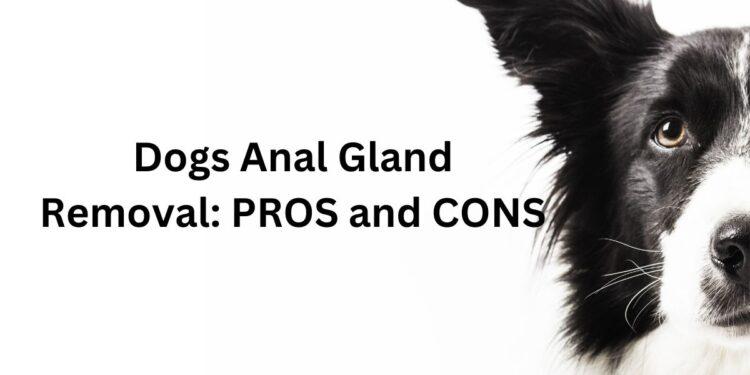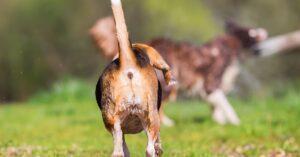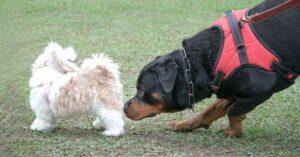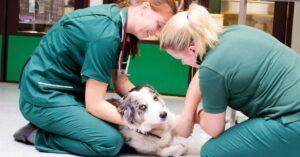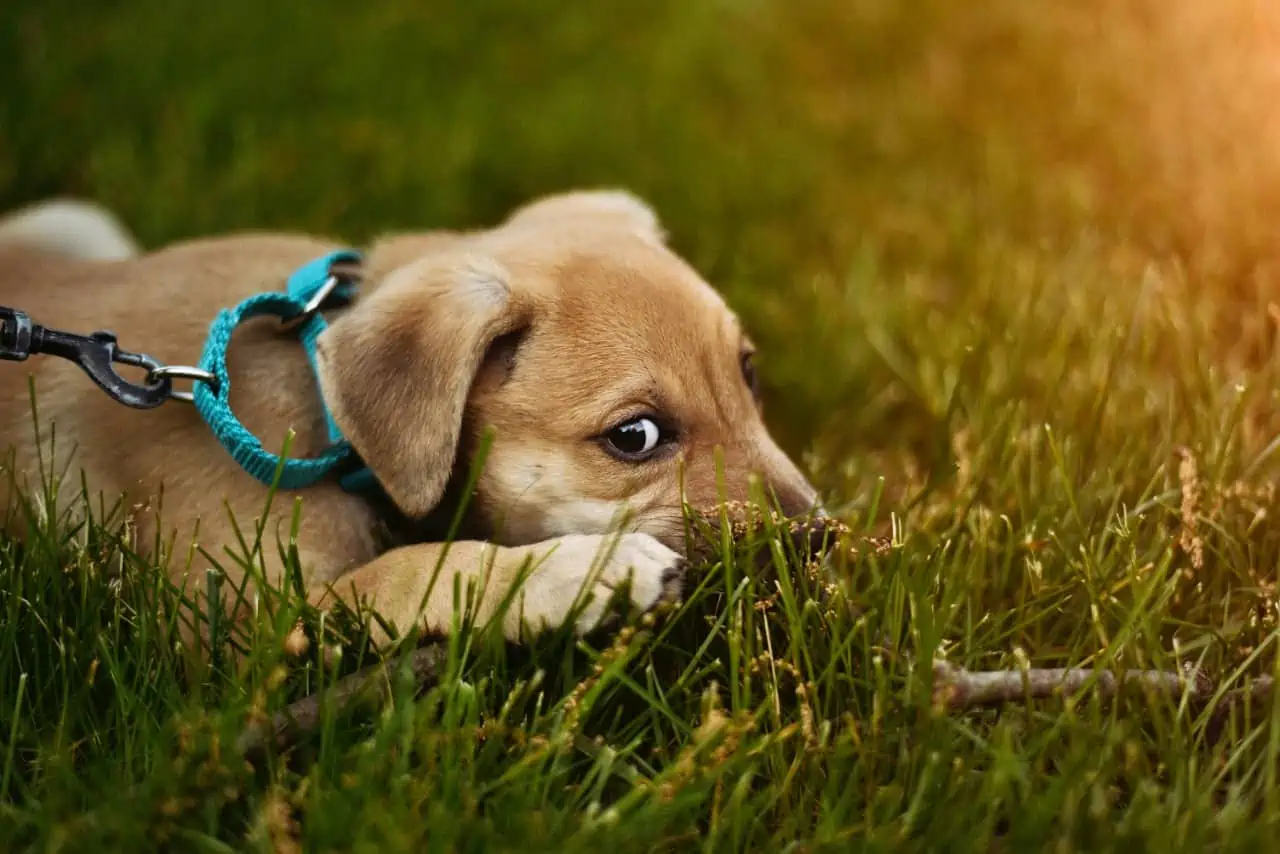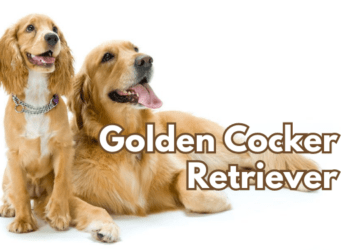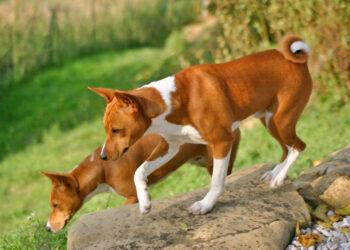At spanieldogs.com, we have previously covered how anal gland issues are traumatic to dogs. And today also we will be discussing the same but in much more detail. So, without any further ado, let’s start.
Dogs Anal Gland Removal, also known as Anal Sacculectomy is a medical procedure of permanently removing deficit anal glands. This is usually the last treatment option and is done by a specialist. In this procedure, the anal glands of the dog are surgically removed to prevent the canine from falling ill every now and then. Given the complicacy of the procedure there are a few risks that every pawrent needs to understand prior to opting for the removal.
Below we have covered all essential aspects of this procedure. But before that let’s understand what anal glands are and what goes through them.
Table of Contents
- 1 What are Anal Glands?
- 2 Is Anal Sac expression really necessary?
- 3 When is it necessary to opt for Dogs Anal Gland Removal?
- 4 What happens during dogs anal gland removal?
- 5 Does Anal Sacculectomy always involve both the anal sacs?
- 6 Is Permanent Dogs Anal Gland Removal Efficient?
- 7 What are the Pros and Cons of opting this process?
- 8 FAQs
- 8.1 What foods help with dogs’ glands?
- 8.2 What are the symptoms of impacted anal glands in dogs?
- 8.3 Do some dogs have a higher risk of developing anal sac problems?
- 8.4 How long does it take for the wounds to heal after anal sacculectomy surgery?
- 8.5 Why is my dog still scooting after the removal of the glands?
- 9
What are Anal Glands?
Located on the fourth and eighth position of a canine’s rear side, anal glands are tiny internal sacs just near the anal gate. These glands are typically responsible for emitting a distinct, foul-smelling pheromone that gives every dog its separate smell.
When a dog is defecating, the continuous pressure from the anal muscles stimulates the glands, which then helps empty out these sacs. As a result, a smelly liquid comes out giving the poop a rotten fish-like smell. Usually the liquid’s color may vary from a deep green, yellow, brown to a thick black texture.
Both male and female dogs have two anal sacs that act as the main scent glands for them and this is why when two dogs meet, they stat their greetings with a vivid butt sniff.
Is Anal Sac expression really necessary?
Apart from offering smell to your dog’s waste, anal sacs have no real importance in your dog’s body. Like discussed above, they secrete a liquid substance that needs to be expressed every day to avoid anal gland issues and also to maintain an overall good health in your canine.
Generally, when a canine’s diet is perfectly balanced, their stool comes out firm which naturally aids stimulate their anal sacs. But if your pooch has been having softer stools, then the sacs may not be expressed, giving their body a foul smell. Even more the canine may feel pain when trying to defecate, which upon ignoring further can escalate into severe issues.
When not expressed for long, the liquid will start thickening causing the sacs to feel heavy, irritated, and even risk exposure to infections. In extreme cases, the sacs may rupture causing the canine a whole lot of discomfort and pain, that will require immediate vet care for the pup to bounce back to its normal health.
When is it necessary to opt for Dogs Anal Gland Removal?
If your canine is diagnosed with a chronic case of anal gland issues and has to be manually expressed every day, then it is better to seek for this final procedure. Also the same goes for instances where the glands have ruptured and are continuously leaking.
When ruptured, the glands leave a gaping hole that is around 10mm in diameter, depending upon the size of the sacs as different breeds have different sized anal sacs. The area around the hole will swell, causing pus to come out which can further worsen the infection rate. This pus is very smelly and doesn’t get off of clothes or furniture easily.
The pup will become easily agitated, may completely avoid going out for pee/poo, and even stop moving or doing their daily activities. They will also lose their appetite, growing weaker and more snappy until proper treatment is offered. Such cases may not improve with manual anal gland expression or consumption of potent antibiotics, requiring vets to perform anal sacculectomy as a final resort.
What happens during dogs anal gland removal?
To help you understand in a more refined way, here is a breakdown of the medical procedures your pup will go through during Anal Sacculectomy.
A detailed Health Evaluation
In the initial phase of preparation, the vets will run the pooch through a series of tests and skin sampling. All of this is done to ensure that the canine can sustain the advanced complex procedure and recover well afterwards. However, if the vet finds any issue with the results, then they may either postpone the procedure or suggest another treatment method for the defected anal glands.
Anesthesia administration
Once everything is marked okay, the second phase will include administration of a proper pain management program. Usually done with a coupling between general anesthesia and inflammatory drugs/oral or injectable analgesics/epidural analgesia, this helps ensure that the infection doesn’t spread to other areas and the dog is safely dazed to prevent any jerks or twists on the operation table.
Shaving and other preparatory steps
Prior to starting with the dogs anal gland removal, the vet team shaves off the area to allow better inspection of the site. Doing so also prevents any chances of hair falling into the operated area and creating infections later on during the recovery stage. Afterwards, the area is scrubbed off with an antiseptic scrub solution, followed by positioning of the animals’ rear into an operable stance.
Incision and Removal
Finally, the procedure is started with the vet making an incision directly over the affected gland. Using the scalpel and other medical instruments, a dissection is carefully made separating the problematic anal sac from the internal anal spinchters. This is a very complex process and needs utmost attention to perform as any mistake can lead to permanent fecal incontinence in the dog after recovery.
The separated anal sac is then discarded and the vet further examines the hole to detect and get rid off any pus or contaminated liquid that may have managed to seep inside. In the latter case, a special tube is inserted into the gap through which the area is thoroughly and repeatedly flushed using antiseptic solution. This is done to make sure that none of the infectious material is left inside, risking further contamination.
Once everything is flushed out or if nothing is found inside, then the gap is sealed with proper measures. The suture typically dissolves within the body automatically, however in some cases they may need to be removed manually.
Does Anal Sacculectomy always involve both the anal sacs?
No, it doesn’t. A vet will never suggest removal of a perfectly healthy anal gland as there is no need to it. Around 80 percent of the dogs anal gland removal cases worldwide includes Unilateral anal sacculectomy, that includes removal of the affected anal gland only. This way the healthy gland will be able to perform its natural duties without risking infection or rupture in the later stage.
Is Permanent Dogs Anal Gland Removal Efficient?
Anal Sacculectomy (either unilateral or bilateral) is a highly efficient procedure for dogs that are repeatedly striked by anal gland issues. Unlike the daily dicomfort of going through manual anal sac expression and other infection related pains, this one-shot-go is comparatively a much better choice.
Once the procedure is safely completed, there is a very rare chance of the pooch getting sick with similar problems, unless the other gland also gets affected, in case of an unilateral sacculectomy.
What are the Pros and Cons of opting this process?
Pros:
A Permanent Solution
As mentioned earlier, anal sacculectomy is a blessing in disguise for canines that are diagnosed with chronic anal sac failure. Rather than having to face the embarrassment and pain of defected anal glands regularly, opting for this procedure gives them a permanent relief from the same. The canine is able to live better without losing their appetite or having a stinging pain every time they try to pee/poo. Moreover, the risk of exposure to infectious microbes also goes down by a lot, reducing the worries of the pawrents.
Reduces exposure to other anal gland problems
As the procedure consists of a thorough study of the dog’s rear area, performing an anal sacculectomy has proven to be a great help in fending off other anal gland problems. Be it general irritation or a frustrating scooting behavior, removing a defected anal sac has been proven to support better working of the anal spinchters.
Additionally, all that blood work and skin sampling is also helpful in detecting any potential issues that may arise in the later stage.
Boosts the Canine’s Confidence
Just like us, our fur babies also feel down when continuously dealing with an underlying health condition. This fall in confidence and morale can show in their daily activities and the way they behave. Furthermore, keeping this ignored for long can severely deteriorate their psyche, and hence in such cases anal sacculectomy can be a confidence booster.
After the recovery, once the dog no longer feels pain or uncomfortable when doing their day-to-day activities, then they will also eventually get happier.
Cons:
Now coming to the disadvantages of opting for this advanced medical process, anal sacculectomy can be:
Quite Pricey
Anal sacculectomy, no matter if it is uniltareal or bilateral, is a very expensive procedure. A trip to the vet for this can cost you anywhere around $1000-$7000, depending upon the treatment plan you are going for. This price generally includes all costs such as initial vet consultation, the procedure and after care. While it may not be much of an issue, pawrents with a tight budget can face certain financial restrictions.
However, most vets’ clinics do offer flexible financial plan schemes for parents that may not be able to fund the process. To know more, you can always talk about this with your vet or consult other local vet clinics.
A few complications
Even though, complications of an anal sacculectomy is very rare, accidents happen, and therefore understanding both the pros and cons before opting for it can come super handy. If proper care is not ensured during the process, injury may occur nearby or within the anal spinchters which could lead to a permanet fecal incontinence in your pooch. As a result, the canine may not control their bladder and hence defecate or pee here and there. This happens in rare cases and only if the vet is rather inexperienced. Therefore, it is very essential to opt for highly experienced and qualified vets only.
Additionally, some canine breeds (mostly smaller ones) are more prone to exhibit a mild form of fecal incontinence after a successful dogs anal gland removal. In such cases, immediately consult with the veterinarian so that they can offer resolution at the right time.
So, this was all about dogs anal gland removal and what you can expect from the procedure. We have also covered many other aspects related to this discussion. Make sure to click here to stay updated on all anal gland issues.
FAQs
What foods help with dogs’ glands?
High-fiber foods are the best for dogs’ anal gland issues as they improve digestion, support the gut biome, and reduce inflammation in the large intestine composing the rectum and the anus. Pumpkin, sweet potato, rice bran, and flaxseed are some high-fiber foods that can keep the anal glands healthy.
What are the symptoms of impacted anal glands in dogs?
Some of the chief symptoms of abnormal anal sac health in dogs are
- Difficulty sitting or standing
- Scooting or dragging the rear end along the ground
- Excessive licking or biting at the tail
- Straining to poop
- An unpleasant fishy odor
Do some dogs have a higher risk of developing anal sac problems?
Certain studies have identified smaller dog breeds such as Chihuahuas, Miniature Poodles, Lhasa Apsos, Dachshunds, Shih Tzus, Poodles, and Bichon Frises as having an elevated risk of anal sac problems. Cross Breeds like Cocker Spaniels and Cockapoos, as well as flat-faced breeds, show a higher tendency for sac disorders compared to pure breeds and longer-skulled canines. Conversely, larger breeds like German Shepherds and Lurchers exhibit a reduced risk of encountering this issue.
How long does it take for the wounds to heal after anal sacculectomy surgery?
The healing process post anal sacculectomy surgery usually takes around two to three weeks. During this period, your dog will need to wear an Elizabethan collar to prevent licking or irritation of the wounds. Keeping the area dry is essential, and you should monitor for any signs of potential complications, including swelling, oozing, or pus.
Why is my dog still scooting after the removal of the glands?
It’s normal for your dog to continue scooting for a few days after gland removal surgery, as the wounds are still in the process of healing. Introducing fiber into their diet can alleviate symptoms by increasing stool size and softness, making it easier to pass. However, if scooting persists beyond 5-6 days, it’s advisable to look for signs of wound infection or consult a veterinarian for guidance.
Reference:
- merillife.com/blog/medtech/types-of-surgical-sutures-and-their-uses
- en.wikipedia.org/wiki/Anal_gland#:~:text=The%20anal%20glands%20or%20anal,of%20members%20within%20a%20species.
If you are a dog lover then, Subscribe to our weekly newsletters. No Spams!
